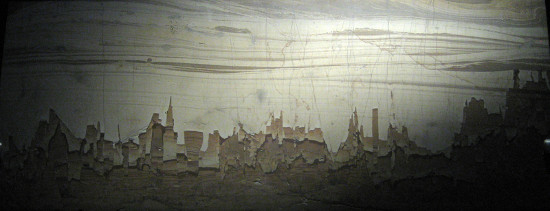
This brecciated limestone, quarried near Florence, has a curious property: When it’s polished it produces the image of an ancient city.
“One is amused,” wrote Parisian naturalist Cyprien Prosper Brard, “to observe in it kinds of ruins; there it presents a Gothic castle half destroyed; here ruined walls; in another place, old bastions; and what still adds to the delusion is, that in these natural paintings there exists a kind of ærial perspective, very sensibly perceptible. The lower part, or what forms the first plane, has a warm, and bold tone; the second follows it, and weakens as it increases in distance; the third becomes still fainter, while the upper part presents in the distance, a whitish zone, and finally, as it reaches the top, blends itself, as it were, with the clouds.”
In his 1832 Introduction to Mineralogy, John Comstock wrote, “At a certain distance, slabs of this marble so nearly represent drawings done in bistre, on a ground of yellowish brown, that it would be difficult to convince one to the contrary.”
